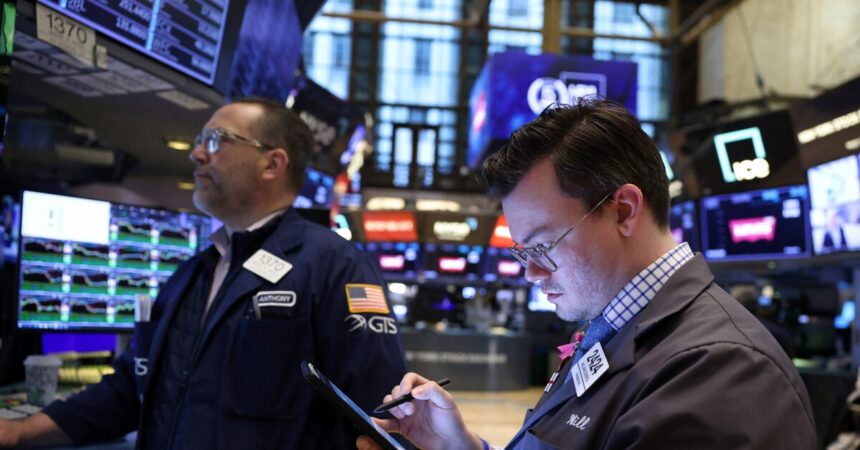After a record-setting run, the U.S. stock market is seeing signs that investors are getting a little nervous. In the week ending September 10, about $10.44 billion flowed out of U.S. stock funds. That’s the biggest outflow in five weeks. It shows that some people on Wall Street are being careful, even with the major indexes hitting new highs.
The outflow affected many areas, but the biggest ones were large-cap stock funds. These funds hold some of the most well-known tech and growth companies the ones that helped boost the market earlier in 2025. Mid-cap and small-cap stock funds also saw some selling, but not as much. At the same time, folks put more money into bonds and money-market stuff, which suggests they’re looking for safer places to park their cash.
This is happening at an interesting time. The S& P 500, Nasdaq, and Dow Jones Industrial Average have all hit record highs recently. AI optimism, good earnings from big tech companies, and talk about the Federal Reserve cutting interest rates have all helped push the market up. Companies like Nvidia, Tesla, and Meta have been key players in this. But despite all the positive news, this outflow shows that some investors are adjusting their portfolios and protecting themselves from possible risks.
One thing people are worried about is stock prices. After the market’s quick rise, some tech and AI companies’ stocks look expensive compared to their earnings. If these companies don’t perform as well as expected, their stock prices could drop. Investors who’ve already made good profits in 2025 might decide to sell now to lock in those gains, in case things get shaky again.
The economy is adding to the uncertainty as well. The latest report on the Consumer Price Index (CPI) showed that inflation rose more than expected in August – 0.4 percent for the month, bringing the annual rate to 2.9 percent. While it’s way lower than the peaks of two years ago, it’s still high enough to make people wonder when the Federal Reserve will cut rates. Most experts still think they’ll cut rates later this year, but the higher inflation numbers have cooled things down a bit.
Global events are also playing a role. Energy markets got jumpy after a Ukrainian drone strike messed with Russian oil exports. The immediate impact on U.S. stocks wasn’t huge, but it showed how global issues can quickly affect markets. Higher oil prices, along with inflation at home, have made investors more cautious.

The fact that money is flowing into bonds and money-market funds tells you something. With U.S. Treasury yields offering good returns and money-market funds being safe and easy to access, investors clearly want safer assets. They’re not giving up on stocks completely, but they are being careful by moving some money into what they see as more stable investments.
For regular folks, $10.44 billion leaving stock funds might sound scary, but it’s just part of how markets work. Even when things are going well, some investors take profits, adjust their portfolios, or move toward safer investments. This activity highlights the difference between those who think the good times will continue and those who are preparing for a possible downturn.
The Federal Reserve’s meeting later this month will be important. They’re facing a tough situation: inflation is still a problem, growth is slowing down, and the job market isn’t as strong as it used to be. If the Fed says that rate cuts are coming soon, it could boost confidence and bring money back into stocks. But if they’re more careful, it could make people even more cautious.
In the short run, these outflows could slow down the market a bit. But in the long run, they show why it’s important to invest wisely. Diversifying, managing risk, and being patient are still essential, especially when markets are caught between feeling optimistic and worried.
Right now, the U.S. stock market is a mixed bag. On the surface, it’s all about record highs. But underneath, billions are quietly moving into bonds and cash. It’s a reminder that even when the market is doing well, investors are always balancing risks and rewards.




